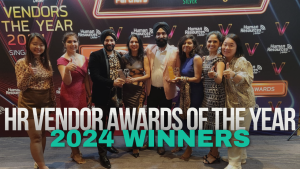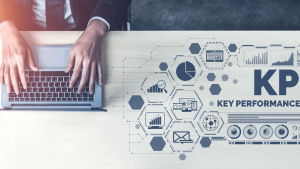Time tracking in cloud solutions brings efficiency and flexibility to our modern work environments. In this section, we will explore the significance of security and privacy in time tracking, ensuring the protection of sensitive data. Additionally, we will delve into the explanation of time tracking in cloud solutions, unravelling the seamless and accurate recording of work hours. Throughout this article, we will shed light on the critical considerations that organizations and individuals must address to maintain a secure and private time-tracking process.
Explanation of time tracking in cloud solutions
Time tracking in cloud solutions is the process of recording and monitoring how much time is spent on tasks/projects. This makes it easy to track hours, monitor productivity, and create reports for invoicing/evaluation. Accessible from any device with an internet connection, it’s perfect for remote workers/teams across different locations.
Cloud-based time tracking has many advantages over traditional methods. It eliminates manual data entry/paperwork, reducing potential errors and saving time. It also provides real-time visibility into project progress/employee activities, allowing managers to make informed decisions/allocate resources better. Plus, it’s scalable/flexible, making it easy to accommodate growth or changes in the workforce without extra hardware/software.
Privacy is important when considering a cloud-based solution. Time tracking must use encryption to protect employee data/client details/project info from unauthorized access or breaches. Access controls must be in place to ensure only authorized people can view/manipulate data. It should also comply with relevant data protection regulations/industry standards. User privacy should be prioritized by anonymizing personal info and obtaining explicit consent to collect sensitive data. Backups/disaster recovery plans should be in place for data loss prevention.
Keep your secrets safe – use secure cloud-based time tracking!
Significance of the Existence of Security and Privacy in Time Tracking
Security and privacy are paramount for time tracking. As more businesses use cloud-based time-tracking software, data protection is vital. The Reference Data gives guidance on the best practices for securing time-tracking software. It shows the importance of addressing privacy to safeguard user information.
Organizations need robust security measures to avoid data breaches and unauthorized access. The Reference Data outlines ways to select secure time-tracking platforms in the cloud. It also covers security features and measures that can help prevent cybersecurity threats relevant to time tracking.
Privacy is a key factor in time-tracking cloud solutions. The Reference Data looks at legal and regulatory aspects of privacy, including the GDPR (General Data Protection Regulation). It encourages incorporating privacy safeguards by design and default when creating time-tracking solutions.
Reference Data highlights the importance of security and privacy for time-tracking cloud solutions. It suggests best practices, criteria for platform selection, cybersecurity measures, and compliance with regulations like GDPR. By emphasizing security and privacy in time-tracking processes, organizations can keep sensitive data confidential while improving productivity.
Data Protection in Time Tracking
Data Protection in Time Tracking: Explore the challenges, best practices, and privacy concerns surrounding time-tracking software in this section. Gain an understanding of the data protection landscape and discover effective strategies for securing your time-tracking system. Delve into the importance of addressing privacy concerns and learn how to navigate these issues to ensure the security and confidentiality of your tracked data.
Overview of data protection challenges in time tracking
Data protection in time tracking can be complex. You must secure sensitive info and ensure it’s available for tracking. To do this, safeguard data from unauthorized access, breaches and loss. With more cloud solutions, new challenges related to privacy and security emerge. Organizations must, therefore, use best practices to secure time-tracking software. This includes factors like confidentiality and cybersecurity measures.
Understand the importance of cloud privacy. Select secure platforms to protect data and comply with legal and regulatory requirements. Guidelines like the GDPR help safeguard data privacy in time-tracking systems. Principles like data privacy by design and default help organizations set up safeguards.
Time tracking involves collecting and storing data on employee activities, projects and tasks. Protecting this data effectively is a challenge. You must keep confidential info secure and accessible for authorized users. Strong security features and measures are necessary to avoid unauthorized access and breaches. Organizations must stay alert to potential cybersecurity threats that could affect their time-tracking data.
Privacy is another key aspect of data protection during time tracking. Employees may worry about their info being collected or used inappropriately. To address this, create clear policies outlining the purpose of collecting data points. Obtain explicit consent from employees for using their personal information for tracking purposes.
To secure time tracking, you must understand the data protection challenges. Implement best practices to protect data effectively. This ensures time tracking remains efficient and secure.
Best practices for securing time-tracking software
Secure time-tracking software by implementing these best practices:
- Strong authentication mechanisms, like multi-factor authentication, password complexity requirements, and regular password updates.
- Data transmission encryption with SSL/TLS protocols.
- Stay up-to-date with security patches.
- Incorporate role-based access controls (RBAC) to restrict user access.
These measures enhance the security of sensitive information in the cloud. Reducing potential risks associated with data breaches and unauthorized access.
Addressing privacy concerns in time tracking
Time tracking involves safeguarding sensitive data. This is to protect individuals’ privacy and maintain confidentiality. To do this, robust security measures need to be implemented, and best practices must be followed.
Organizations must prioritize data protection in their time-tracking systems. This will instil trust among employees who may have privacy concerns. Strict access controls, encryption protocols and regular auditing need to be done.
It’s important to consider the legal and regulatory aspects of privacy. For example, GDPR (General Data Protection Regulation) guidelines must be followed for compliance in the EU. A ‘privacy by design and default’ approach should be taken when developing time-tracking solutions.
Cloud Privacy for Time Tracking
Cloud privacy is a crucial aspect to consider when it comes to time tracking. In this section, we will explore the significance of maintaining privacy in cloud-based time-tracking solutions. We’ll delve into key considerations one must keep in mind when selecting secure platforms and how to ensure confidentiality within time-tracking systems. Stay informed about the latest privacy concerns and discover practical insights to protect your data.
Understanding the importance of cloud privacy in time tracking
Cloud privacy is essential for time-tracking systems. Sensitive data such as employee hours and client info must be safeguarded. Security features and protocols should be implemented. Encryption techniques should protect data in transit and at rest. Access controls should also be established. Regular security audits and vulnerability assessments will help identify weaknesses.
Privacy concerns must be addressed too. Transparency about data collected, use, and who has access is key. Users should have control over their personal data. This goes beyond compliance with regulations. It’s about protecting trust between organizations and their stakeholders.
Organizations should prioritize security measures. Strong encryption practices must be implemented. Appropriate measures must be taken to secure data and ensure cloud privacy. This will ensure accurate time-tracking data for payroll, project management, and client billing. Choose the right time tracking platform or risk getting caught with your data exposed.
Key considerations for selecting secure time-tracking platforms
When choosing a secure time-tracking platform, think about these factors to ensure data protection and privacy:
- Check the data protection measures: Look for encryption, access controls, and backup protocols.
- Examine the security features: Authentication processes, secure hosting, and software updates.
- Ensure compliance with privacy regulations: Such as GDPR, to keep info confidential and meet legal requirements.
- Scrutinize the track record and reputation: Read customer reviews, testimonials, and security certifications.
These tips will help you pick a secure time-tracking platform that values data protection and offers effective tracking.
Ensuring confidentiality in time-tracking systems
Time tracking systems need confidentiality so sensitive data can stay safe. This article talks about the difficulty of data protection in time tracking and the practices to secure the software. Privacy is also important to keep the system confidential.
- Encrypt data: Data encryption helps keep the system confidential. It encrypts data during rest and transmission, preventing unauthorized access and adding an extra layer of security.
- User access control: Restrict access to sensitive info by creating roles and permissions for authorized personnel only.
- Audit trails: Keep a detailed log of changes or unauthorized access. This helps identify and tackle security issues quickly.
- Secure storage: Store data in secure databases or cloud platforms with firewalls and intrusion detection.
Keep the system up-to-date and patch any loopholes to maintain confidentiality. With these measures in place, data and individuals using the system can stay private. To summarize, ensure confidentiality in time tracking systems with encryption, user access control, audit trails, and secure storage. Regular updates and patches are also necessary.
Cybersecurity Measures for Time Tracking
In the realm of time tracking, ensuring robust cybersecurity measures is paramount. This section will provide insights into the cybersecurity threats specific to time tracking, highlighting the importance of implementing security features and best practices. By understanding these measures, businesses can safeguard confidential data and mitigate potential risks.
Overview of cybersecurity threats in time tracking
Time tracking systems are not secure from cyber threats. They are vulnerable to a range of risks. Unauthorized access, data breaches, malware attacks, and phishing attempts are some of these threats.
Unauthorized access is one big worry. Attackers may try to get into the time-tracking software with the aim of changing or stealing data. This includes employee hours worked, payroll data, and client information. If the system has flaws, a data breach could occur.
Malware attacks are another risk to time-tracking systems. Attackers use malicious software to infect devices used for time tracking. This enables them to get sensitive information or disrupt the software’s performance. It could have a bad effect on the whole system.
Phishing attempts could also be a risk. Attackers make users give away their login credentials or other sensitive data. They might pretend to be real sources and make users tell information that can be misused.
To protect time tracking systems from these cyber threats, security measures must be in place. Strong authentication protocols, encryption of data at rest and in transit, regular software updates and patches to tackle vulnerabilities, and robust intrusion detection and prevention systems are some of the key measures. Educating users about online security and making them aware of possible threats can decrease the chances of cyber attacks.
Monitoring and auditing of access logs and user activities is also essential. Organizations need to keep up with the newest cybersecurity technologies and use the best practices to secure their time tracking systems from emerging threats.
Remember, just like you would lock your front door to secure your home, it is important to lock down your data and protect your time tracking system from intruders. Taking precautions against cyber threats should always be a top priority.
Security features and measures to protect data in time tracking
Security is an essential part of protecting data in time tracking systems. Precautions ensure information is secure from unauthorized access and cyber threats, preserving its integrity and confidentiality.
Platforms use encryption to protect data during transmission and storage. This ensures only those with the decryption keys can access the info.
Access control mechanisms like username/password combinations help protect against breaches. Audit trails let organizations monitor and track suspicious activities in real time, helping them quickly investigate potential security incidents.
Periodic security audits, vulnerability assessments, and software updates are also necessary for maintaining a secure environment. Organizations should also consider endpoint protection, multi-factor authentication, user permission controls, IDS/IPS, regular data backup, and industry best practices.
By adopting these measures, organizations can reduce risks of breaches and data leaks while protecting privacy. Neglecting security can lead to numerous consequences like damaged reputation, financial losses, and falling behind competitors.
Secure your data and stay on schedule with these cybersecurity best practices in time tracking platforms.
Implementing cybersecurity best practices in time tracking platforms
It is key for safeguarding data in time tracking platforms that cybersecurity best practices are implemented. As cloud solutions for time tracking become more commonplace, potential security threats and vulnerabilities must be addressed. Employing encryption measures, multi-factor authentication, regular software and patch updates, real-time activity monitoring, and educating employees on cybersecurity best practices can strengthen time tracking platforms and reduce the risk of data breaches or unauthorized access.
Consider this: a small biz recently set up a cloud-based time tracking platform, but failed to deploy strong passwords and multi-factor authentication. Consequently, their system was compromised, resulting in both financial losses and an invasion of employees’ privacy. This serves as proof that cybersecurity best practices are essential for protecting privacy like it’s your favorite mug at the office kitchen.
Lock Your Enterprise Data & Privacy with Time Cnetral’s Cloud Solutions
Protect your sensitive data and ensure privacy with TimeCentral’s secure Time Cloud Solution. With robust features like Attendance Tracking with Geofencing & Geolocation, Announcements, Incident Reporting, Scheduling App, Absence Management, and Mobile App, we prioritize the security of your information.
- Attendance Tracking: Track employee attendance accurately and securely with our reliable Attendance Management Software.
- Geolocation & Geo-fencing: Safeguard your workforce and assets using advanced Geolocation and Geo-fencing technology, ensuring secure location-based tracking.
- Absence Management: Manage employee absences securely and efficiently with our comprehensive Absence Management System.
- Announcements: Communicate important updates securely through our secure and encrypted Announcements feature, ensuring confidentiality.
- Incident Reporting: Report and manage incidents securely with our dedicated Incident Reporting module, protecting sensitive information.
- Scheduling App: Optimize resource allocation and manage schedules securely using our reliable Scheduling App, ensuring data privacy.
- Mobile App: Access time-related information securely on the go with our encrypted Mobile App, providing convenience without compromising security.
Safeguard your data and ensure privacy with TimeCentral’s secure Time Tracking Cloud Solution. Visit TimeCentral to learn more and schedule a demo.
Privacy Safeguards in Time Tracking
Privacy safeguards in time tracking are of utmost importance, ensuring compliance with legal and regulatory aspects while protecting user data. Delving into key considerations, we explore the impact of GDPR on data protection in time tracking and the implementation of data privacy by design and default in time tracking solutions. Stay informed about the protective measures that are crucial in safeguarding your privacy with these time tracking cloud solutions.
Legal and regulatory aspects of privacy in time tracking
Time tracking in cloud solutions has various legal and regulatory aspects of privacy. Organizations must comply with data protection laws, following national and international regulations that govern the collection, processing, storage, and sharing of personal data. The GDPR in Europe, for example, sets rules for handling personal info and grants individuals certain rights.
Privacy rules may need organizations to get explicit consent from individuals before collecting their time tracking data. Companies must tell employees how their personal information will be used and get consent before starting any time tracking processes. Explaining the purpose of this data and how it will be protected is essential.
Organizations must also implement security measures to protect the privacy of those involved in time tracking activities. This includes using encryption for data during transmission and storage, monitoring for security breaches or unauthorized access, and doing privacy impact assessments to spot risks or weaknesses.
To address the legal and regulatory privacy parts in time tracking, organizations must create robust policies and procedures that give clear guidance for handling personal information. Comprehensive training programs for employees involved in time tracking should also be carried out to ensure compliance with relevant regulations.
By adhering to legal requirements and protecting privacy rights, organizations can gain trust with their employees and stakeholders while reducing potential legal risks tied to time tracking activities.
GDPR and its impact on data protection in time tracking
The General Data Protection Regulation (GDPR) has had a huge effect on protecting data in time tracking. The EU brought in these regulations to guard the personal details of people. Companies have to follow strict rules when they collect, store, and use someone’s information.
GDPR has changed how data protection works in time tracking. Companies must show they have the right to process info, plus get explicit permission from people. They must also take steps to stop people accessing or revealing the data without permission.
Individuals have the right to see their own data and ask for it to be deleted. This puts more pressure on companies to keep the data safe and store it securely. They must also tell people what their rights are and how their data will be used.
To sum up, GDPR has revolutionized data protection in time tracking. It has stricter rules to protect people’s information and gives individuals more say over their data. Companies must obey these regulations to stay legal and earn the trust of their clients.
Data privacy is not something to think about later; it’s the base of reliable time tracking solutions.
Data privacy by design and default in time tracking solutions
Data privacy is a must in time tracking solutions! It’s built-in from the start, so you know your data is protected. This includes security features, like encryption and access controls, to keep personal info safe.
Data privacy is set to the highest level by default, so users don’t have to adjust settings for optimal protection. This helps businesses meet regulations like GDPR, which mandates security for personal data.
Organizations should be prioritizing data privacy when it comes to time tracking. This builds trust with users and shows a commitment to protecting info. Robust security measures must be implemented from the start of software development. Then, user data remains confidential and secure throughout the process.
Conclusion
In the conclusion, we summarize the importance of considering security and privacy in time tracking cloud solutions and provide key takeaways and recommendations for selecting and implementing secure platforms. Protecting sensitive data and ensuring user privacy are crucial aspects of utilizing time tracking systems, and understanding their significance can help individuals and organizations make informed decisions in safeguarding their information.
Let’s explore the key points and recommendations that can guide us towards secure time tracking platforms:
Summary of the importance of security and privacy considerations in time tracking cloud solutions
The value of security and privacy in time tracking cloud solutions is paramount. Data protection must be a priority in the digital world. This includes understanding the data protection challenges, using best practices to secure time tracking software and addressing privacy concerns.
- Data Protection: Be conscious of the difficulties related to data protection in time tracking. Take the necessary steps to protect sensitive information.
- Cloud Privacy: When picking a time tracking platform, look out for features such as security, confidentiality and privacy regulations.
- Cybersecurity: Cybersecurity threats are a big risk to time tracking systems. Put in place strong security measures to guard data from unauthorised access or breaches.
Moreover, companies need to abide by legal and regulatory privacy requirements when it comes to time tracking. For instance, GDPR has a major impact on data protection, requiring organisations to apply stringent privacy safeguards. Additionally, incorporating data privacy by design and default into time tracking solutions ensures that privacy is a top priority.
Pro Tip: Make sure to review the security and privacy features of time tracking platforms, as well as if they comply with GDPR and other relevant regulations.
Key takeaways and recommendations for selecting and implementing secure time tracking platforms
Time tracking software is an essential part of cloud solutions – security & privacy must be ensured. Data protection is challenging in time tracking, but there are best practices to secure the software. Privacy concerns must also be addressed, to keep sensitive info confidential.
Key takeaways & recommendations for secure time tracking platforms:
| Pay attention to cloud privacy when choosing one. Understand the importance of privacy for data protection from unauthorized access. |
| Consider security features & measures offered when selecting one. Look for robust cybersecurity measures to protect data from potential threats. |
| Implement cybersecurity best practices for the security of your time tracking system. This includes software updates, vulnerability assessments & employee training on secure usage practices. |
Following these key takeaways & recommendations will help you select & implement secure time tracking platforms effectively.
FAQs
Ques 1. How secure is the data in a Time Tracking Cloud Solution?
Ans 1. Time Tracking Cloud Solutions employ robust security measures, including encryption, access controls, and regular data backups, ensuring the protection of sensitive information.
Ques 2. Can employees’ location data be securely tracked in Time Tracking Cloud Solutions?
Ans 2. Yes, Time Tracking Cloud Solutions use secure geofencing and geolocation technologies, ensuring accurate tracking of employee locations while maintaining data privacy.
Ques 3. Are employee attendance records kept private and confidential in Time Tracking Cloud Solutions?
Ans 3. Absolutely, Time Tracking Cloud Solutions prioritize data privacy, keeping attendance records secure and confidential through strict access controls and encryption protocols.
Ques 4. How does Time Tracking Cloud Solutions ensure the confidentiality of sensitive announcements or notifications?
Ans 4. Time Tracking Cloud Solutions provide secure and encrypted channels for sending announcements, ensuring the confidentiality of sensitive information within the organization.
Ques 5. Can incident reports be submitted securely in Time Tracking Cloud Solutions?
Ans 5. Yes, Time Tracking Cloud Solutions offer secure incident reporting modules, allowing employees to submit reports confidentially, ensuring the privacy of sensitive incidents.
Ques 6. What measures are taken to protect employee scheduling and absence management data in Time Tracking Cloud Solutions?
Ans 6. Time Tracking Cloud Solutions employ strong data protection mechanisms, including encryption, access controls, and secure servers, to safeguard employee scheduling and absence management data.






